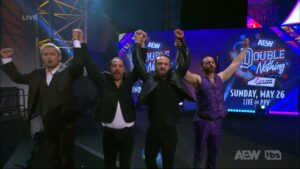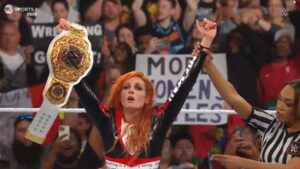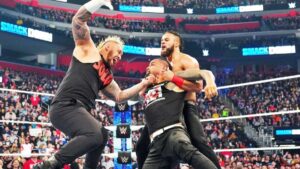While there is always an annual debate about whether or not that year’s WWE Hall of Fame class is worthy of induction, alongside the proverbial ‘so-and-so’ should be in ahead of ‘so-and-so’, the WWE has definitely made great traction in the past several years. Triple H has become the Great Mender of sorts, repairing broken relationships with the WWE and it’s former stars, such as Bruno Sammartino and Ultimate Warrior, and getting them recognized in the WWE Hall of Fame and back into the legacy of WWE. But for many wrestling purists, the WWE Hall of Fame was missing far more than past WWF or WCW stars that fans clamoured for simply out of childhood nostalgia – it was missing many of the building blocks of the industry itself. Sure you had early stars like Antonino Rocca and Gorgeous George, but the inductees were rarely stars prior to 1970.
But last year, the WWE seemed to start another road on rectifying this with the creation of a brand division of the WWE Hall of Fame, the Legacy wing, dedicated to the pioneers, not only of the earliest days of television in the 1940s and 1950’s, but back to the very beginning of the sport itself. Last year’s inaugural inductees, including George Hackenschmidt, Frank Gotch, and Mildred Burke, showed that the WWE was finally putting the history of the industry ahead of simply it’s own history (and with Triple H being well known as such a historian, it wouldn’t be surprising to find out he had a big hand in this as well). Because let’s be honest – prior to the creation of the Legacy wing, Lou Thesz deserved to be in the Hall of Fame more than Rick Rude or Chyna.
So it was with great relief that it was revealed that the Legacy wing would continue past it’s first class of 2016 and that eight more names were revealed to be entering with the Hall of Fame class of 2017 (it was reported by Dave Meltzer of Observer Online after Hall of Fame shirts were spotted with the full classes on them). Here’s a look at the eight new Legends and Pioneers of the sport who will take their place in the 2017 WWE Hall of Fame Class in the Legacy Wing.
RIKIDOZAN, 1924-1963

One of the industry’s most influential men of all time, Rikidozan is considered the Father of Puroresu (professional wrestling in Japan). Real name Kim Sin-Rak, he moved from his native land of Korea as a child to become a Sumo wrestler in Japan. By 1950, he had given up on Sumo wrestling and turned to professional wrestling, which had yet to cultivate properly in Japan. He soon became Japan’s first international star, with classic rivalries with Lou Thesz, Freddie Blassie, and The Destroyer, and formed Japan’s first pro wrestling promotion, Japan Pro Wrestling Alliance (JWA) in 1953, where he trained future legends such as Antonio Inoki and Giant Baba. Sadly, Rikidozan’s legacy was cut short when he died from complications from a knife attack from the Yakuza in 1963 at the age of 39. JWA only last a decade longer without Rikidozan, but following it’s demise it’s two biggest stars (and students of Rikidozan) would go on to form Japan’s two strongest promotions – Inoki with NJPW and Baba with All-Japan.
FARMER BURNS, 1861-1937

Martin ‘Farmer’ Burns was one of America’s greatest carnival grapplers in the late 1800’s, taking on all comers with a bravado and abandon that would strike fear in his opponents. But he was also a cunning showman, and quickly understood of a well placed loss in his string of victories to give glimmer of weakness to increase gate sales for future rematches. Following an impressive career, Burns went on to train many stand-out performers of the early 1900’s, including World Champion and WWE Hall of Famer Frank Gotch, Earl Caddock, and fellow 2017 WWE Hall of Famer Toots Mondt.
TOOTS MONDT, 1894-1976

James E. “Toots” Mondt just might be one of the most influential men in the history of the sport of wrestling. A famed grappler himself (trained by the previous entry, Farmer Burns), Toots actually served a larger impact to the industry outside the ring rather than in it. In the early 1920’s, Mondt – alongside Ed ‘Strangler’ Lewis and Billy Sandow – was part of the Gold Dust Trio, three men who radicalized the entire professional wrestling industry. They combined various styles of wrestling, from Greco-Roman to freestyle to the Lumberjack camp rough-house, into one open format (dubbed ‘Slam Bang Western Style Wrestling’), which the industry still adopts today, as well as moving the action into a boxing ring. Together, the three became solidified promoters and bookers for talent across the country, effectively becoming the first proper wrestling promotion as we know it. By 1928, the Trio was dissolved, by Mondt would become a power broker in the New York area, training such future icons as Jim Londos, Antonino Rocca and Stu Hart. In 1953, he founded Capitol Wrestling with another area promoter, Roderick James “Jess” McMahon, which became the NWA territory in the New York area. Sadly, Jess died the following year, but his spot was taken over by his son, Vincent J. McMahon. By 1963, Mondt and McMahon seceded from the NWA and renamed Capitol Wrestling to the World Wide Wrestling Federation (WWWF). Shortly before his death in 1976, Mondt sold his interest in the WWWF to McMahon, who ultimately sold both shares to his own son, Vincent K. McMahon, in 1982. Without Mondt’s creativity and business acumen, not only would the WWE have failed to exist, but the very industry as we know it.

JUNE BYERS, 1922-1998

Trained by Mae Young, Byers emerged as the biggest women’s wrestling star of the 1950’s when she emerged from the shadows of 40’s star Mildred Burke and became the Women’s World Champion in 1953. She was a dominant wrestler, but perhaps her bravado got the best of her – the NWA stripped her of the World Championship in 1956 when she bragged she planned to retire as the Champion. She retired in 1964 following a car accident that left her with a damaged leg.
HAYSTACKS CALHOUN, 1934-1989

Haystacks Calhoun was one of the most popular draws of the 1960’s and 1970’s, despite a lack of championship gold. At over 650lbs., Calhoun was more of a spectacle in the ring, more often placed in handicap matches, similar to the booking of Andre The Giant. His strength and sheer size were more impressive than his wrestling ability. But there was no denying his box office draw or his charisma, and Calhoun was a huge star wherever he went, including one of his final runs in the 1970’s in the WWWF, when he captured Tag Team gold with Tony Garea. Unfortunately, his health was in constant decline due to his size and he was forced into retirement by the decade’s end and in the 1980’s, lost a leg to diabetes before passing away in 1989.
DR. JERRY GRAHAM, 1921-1997

Dr. Jerry Graham debuted in 1947 and by the 1950’s was box office gold in The Golden Grahams, a tag team featuring his ‘brother’, Eddie Graham. As regulars with Capitol Wrestling in the New York area (where he and Eddie often sold out Madison Square Garden), he became Vince McMahon Jr.’s favourite wrestler as a child. He would become the head of the kayfabe Graham family in professional wrestling both during and after his own in-ring days. In the early 1970’s with the WWWF, he introduced the world to ‘Crazy’ Luke Graham, Eddie Graham, Mike Graham, Dr. Jerry Graham Jr., and perhaps his most famous ‘family member’, ‘Superstar’ Billy Graham.
JUDY GRABLE, 1935-2008

Another early pioneer in women’s wrestling, Grable debuted in 1953 after being trained by the Fabulous Moolah. Despite a high level feud with Moolah over the Women’s Championship, Grable failed to capture the title in her 13-year career. A solid worker and grappler on the women’s circuit and an early inspiration.
LUTHER LINDSAY, 1924-1972

At first glance, the induction of Luther Lindsay may seem like a throwaway inductee, but his place in history is actually quite profound. In many ways, he’s the Jackie Robinson of professional wrestling. During the early 50’s, due to many state legislations in regards to color segregation, African-American wrestlers were not allowed to wrestle non-African-Americans. Lindsay was an early African-American star who began to transcend the racial boundaries in the territories he worked, opening up the doors for other African-American wrestlers to find work. On July 24, 1953, in Tacoma, Washington, Lindsay faced NWA World Heavyweight Champion Lou Thesz for the title, becoming the first African-American to be allowed to wrestle for that distinction. Lindsay would go on to a lengthy career, working for the NWA, Stampede Wrestling, and Mid-Atlantic, amongst others, with his final World title shot occurring against Dory Funk, Jr. in 1971. Lindsay’s story would have a seeming Hollywood ending as he died doing what he loved. He suffered a massive heart attack in the ring as he was pinning his opponent, winning his last match ever.
Main Photo: WWE.com






